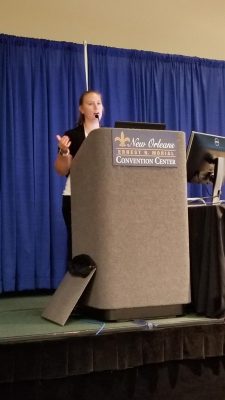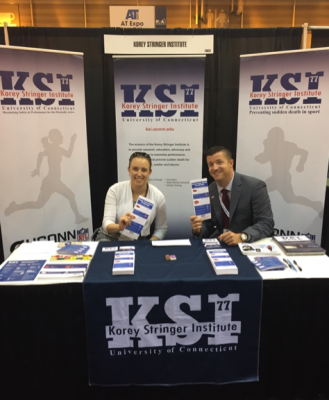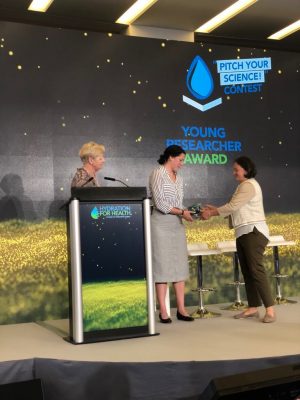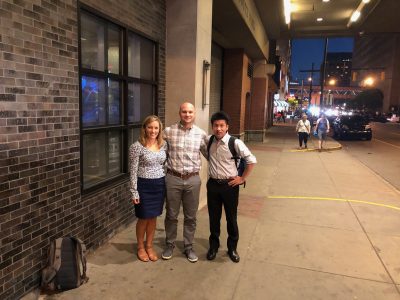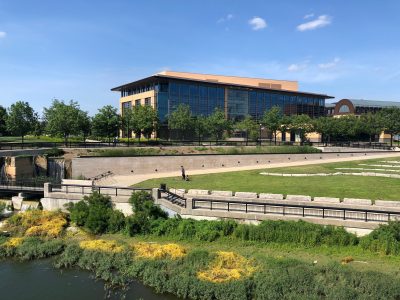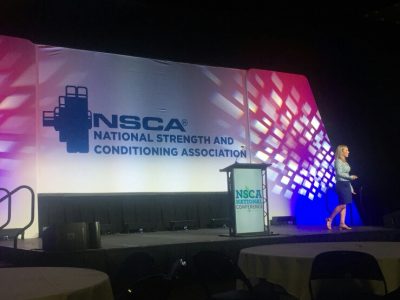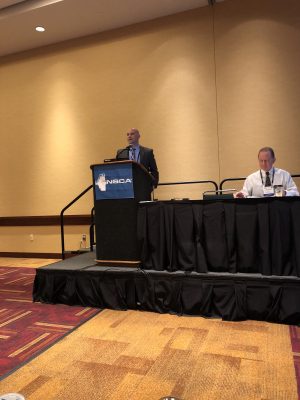The University of Maryland placed multiple members of its athletics staff on administrative leave as an external review of the death of football player Jordan McNair continues, a school spokesman confirmed Friday.
Maryland would not specify which staff members were placed on leave, calling it a “personnel issue” and saying in a statement, “We will be able to speak in greater detail when the review is complete and shared with the public.” Coach DJ Durkin was seen running practice Friday in footage posted to social media by the Big Ten Network.
The review is being conducted by Walters Inc., an athletic training consulting firm, and is expected to conclude Sept. 15, according to a contract obtained by The Washington Post through a public records request.
McNair, an offensive lineman, died June 13 after suffering heatstroke at a team workout May 29. He was 19. McNair’s parents announced the cause of death in early July on a website promoting the Jordan McNair Foundation, which they started after their son’s death. Attorney Billy Murphy, who is helping the family explore legal options, told The Post on Friday that a lawsuit is likely.
Maryland started training camp last week and has not opened practice to reporters, nor has it made coaches or players available for interviews.
An ESPN story published late Friday afternoon, citing former staffers and current and former players, described a toxic Maryland football culture that includes an “environment based on fear and humiliation,” regular verbal abuse of players and an encouragement of unhealthy eating habits to gain weight. The story depicts a culture that was cultivated by Durkin and largely carried out by strength and conditioning coach Rick Court.
Through a spokesman, the university declined to comment on the ESPN report Friday night. Efforts to reach Court were unsuccessful.
Court was one of Durkin’s first hires when the coach came to Maryland in 2015, and he heads the strength and conditioning staff that supervised the workout that led to McNair’s hospitalization. A former Maryland football player, who was on the team for Durkin’s two seasons with the program, told The Post that Court “was always cursing and yelling at guys, calling them names.”
“That was just Rick; it was all him,” said the player, who painted a culture that mirrored the one described by the ESPN story. The player, who played one season under former coach Randy Edsall, noted that the atmosphere he described began with Durkin’s first year in the program. “There was just constant degrading of players, and that was the culture they brought to the program, and they thought it would toughen us up.”
In a 2017 story on Court, Durkin told The Post: “To me, if the head coach and the strength coach are not totally in line with one another, there’s something that’s going to miss. Me and Rick are in line.”
The former player confirmed to The Post that a former offensive lineman was forced to eat candy bars while watching his teammates work out, a tactic used to embarrass him into losing weight. The former player also said Court once made an injured player participate in a tug-of-war against a group of teammates, and the player was berated by Court when he did not win. Players who won a game of tug-of-war were the first to eat breakfast, the former player said, and he added, “We showed up everyday sort of scared of what may happen. It was kind of crazy.”
He also said that an injured player’s locker was moved to the showers as a way to “humiliate him, which really wasn’t necessary.” Maryland players are encouraged to finish workouts at all costs, multiple people have told The Post, and are degraded if they are unable to do so.
“It became the standard. No one was going to accept, ‘I just won’t finish the workout because I’m exhausted.’ You had to finish,” the former player told The Post on Friday. “Workouts determine if you are going to play for Coach Durkin. If you show you can’t work out to that standard, then you’re not going to see playing time. I don’t know how it is in other programs, but if you show weakness during workouts, I’m pretty sure [Durkin] is automatically going to think that, when the pads come on and it’s time to play, he can’t trust you.”
The May 29 workout was supervised by Maryland’s strength and conditioning staff, and athletic trainers were present throughout, according to a loose account of the day provided by the university. Durkin was also at the workout, which was held at Maryland’s outdoor practice facilities in roughly 80-degree weather. McNair had trouble recovering from a conditioning test that consisted of 10 110-yard sprints, according to the university. Seizures are a known symptom of exertional heatstroke.
ESPN reported Friday that McNair suffered a seizure around 5 p.m., according to his attorney, 45 minutes into the team workout. An incident report written by Prince George’s County medical responders, obtained by The Post through a public records request, shows that a first 911 call was made at 5:57 p.m. and a second was made 10 minutes later. McNair was transported to nearby Washington Adventist Hospital, where he arrived at 6:36, and was soon airlifted to R Adams Cowley Shock Trauma Center in Baltimore. That is where McNair remained until his death.
Multiple medical experts said death from exertional heatstroke is 100 percent preventable if a patient is submerged in a cold-water tub and the body temperature is cooled to 104 degrees within 30 minutes of symptoms appearing. It is unclear whether Maryland treated McNair with cold-water immersion after he started showing symptoms of heatstroke, though Murphy told ESPN that McNair “presented at the hospital with a temperature of 106, which means he was not cooled down.”
“The bottom line when you look at a case like this, and I’m not doing this to point blame or anything, but there was something done incorrectly in this situation,” Douglas Casa, chief executive of the Korey Stringer Institute at the University of Connecticut, told The Post last month. The institute — named for the NFL player who died after suffering complications brought on by heatstroke in 2001 — works to prevent sudden death in sport. “We know that because he died from heatstroke, and within an organized sports setting, no one should die from heatstroke.
“It would be different if you had a situation that was 70 percent effective or 60 percent effective; this is 100 percent effective if you utilize cold-water immersion within 30 minutes and you get someone’s temperature down rapidly. It’s not hard to get someone’s temperature down to 104 within 30 minutes if you use the right cooling modality.”
Roman Stubbs contributed to this report.
Source: Washington Post

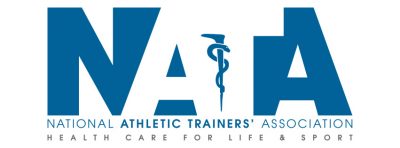
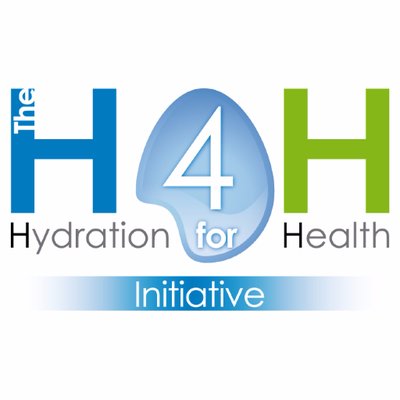


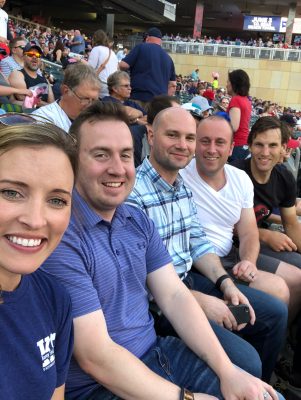 Attending this conference allows the KSI staff to obtain further knowledge, skills and new ideas as well as make new relationships with other professionals. This conference certainly helps to develop KSI and execute our goals to maximize performance, optimize safety and prevent sudden death for the athlete, soldier and laborer. The KSI staff members are thankful to all of the presenters and attendees for their contributions to this field as well as helping make this conference one where individuals who are passionate about similar topics can meet, collaborate, and enjoy one another.
Attending this conference allows the KSI staff to obtain further knowledge, skills and new ideas as well as make new relationships with other professionals. This conference certainly helps to develop KSI and execute our goals to maximize performance, optimize safety and prevent sudden death for the athlete, soldier and laborer. The KSI staff members are thankful to all of the presenters and attendees for their contributions to this field as well as helping make this conference one where individuals who are passionate about similar topics can meet, collaborate, and enjoy one another.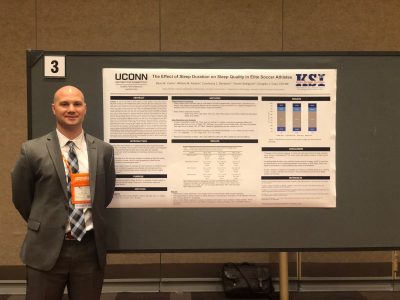
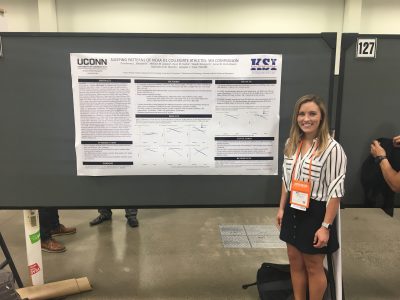
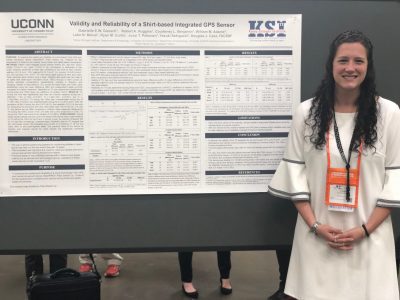

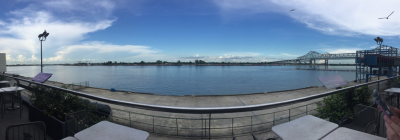
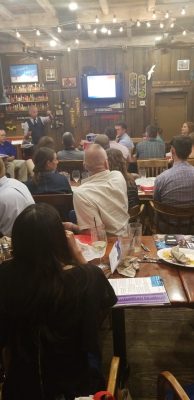 The week kicked off with our Medical & Science Advisory Board Meeting at one of Dr. Casa’s favorite restaurants – Bubba Gump Shrimp Co. We were very thankful to have so many familiar faces in the room, and even saw a little competitiveness come out in a friendly game of Bubba Gump Trivia. Following dinner and a lot of laughs, Dr. Casa spoke to the Board regarding the recent accomplishments of KSI, especially three primary initiatives that have been the focus over the last couple years: (1) the ‘Raise Your Rank Campaign’, a state-specific approach aimed at improving mandated best practices policies to reduce catastrophic injuries in sport, (2) the Athletic Training Locations and Services (ATLAS) database, which has now officially mapped the extent of athletic trainer services provided to every public and private secondary schoolacross the United States, and (3) the Perceptions of Athletic Training study, which is currently assessing perceptions of the profession from athletic directors, principals, superintendents, legislators, coaches, and parents in order to develop educational strategies to further raise awareness of the value of the athletic training profession.
The week kicked off with our Medical & Science Advisory Board Meeting at one of Dr. Casa’s favorite restaurants – Bubba Gump Shrimp Co. We were very thankful to have so many familiar faces in the room, and even saw a little competitiveness come out in a friendly game of Bubba Gump Trivia. Following dinner and a lot of laughs, Dr. Casa spoke to the Board regarding the recent accomplishments of KSI, especially three primary initiatives that have been the focus over the last couple years: (1) the ‘Raise Your Rank Campaign’, a state-specific approach aimed at improving mandated best practices policies to reduce catastrophic injuries in sport, (2) the Athletic Training Locations and Services (ATLAS) database, which has now officially mapped the extent of athletic trainer services provided to every public and private secondary schoolacross the United States, and (3) the Perceptions of Athletic Training study, which is currently assessing perceptions of the profession from athletic directors, principals, superintendents, legislators, coaches, and parents in order to develop educational strategies to further raise awareness of the value of the athletic training profession.